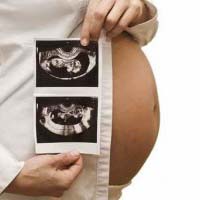Analysis of the syllabus for Gynecology and Obstetrics subject in fourth academic year of medicine major
Keywords:
PROGRAMS OF STUDY, MEDICAL EDUCATION, TEACHING.Abstract
Introduction: doctor's mission requires an efficient improvement of the teaching-learning process according to the time and space that has come to live. The analysis of the curricula, disciplines and subjects allows offering considerations that will result in its improvement.
Objective: to analyze the syllabus of Gynecology and Obstetrics subject that is taught in the fourth academic year of the medical major and its contribution to the accomplishment of the social role, in correspondence with the model of professional to be trained and the performance of the future general practitioner.
Methods: the documentary review was used as empirical level method, which included the syllabus of Gynecology and Obstetrics subject. Analysis-synthesis and induction-deduction were used at the theoretical level.
Results: the syllabus analyzed made possible to specify the fulfillment of the aims of Cuban education and contributes to the training of a competent professional; nevertheless it is capable of being perfected.
Conclusion: the syllabus of Gynecology and Obstetrics increases the quality of the teaching-learning process and health care integration, as there is a relationship between the disciplines, which at the same time, contributes to the accomplishment of their social role in accordance with the model of physicians trained and their performance.
Downloads
References
.1. Alarcón Ortiz R. Conferencia Magistral Pedagogía. [Internet] 2015. [Citado 5 de abril de 2017] Disponible en: http://www.uh.cu
2. Miralles Aguilera EA, Taureaux Díaz N, Fernández Sacasas JA, Pernas Gómez M, Sierra Figueredo S, et al. Cronología de los mapas curriculares en la carrera de Medicina. Revista Educación Médica. [Internet] 2015 [Citado 20 de marzo de 2017]; 29(1). Disponible en: http://www.ems.sld.cu/index.php/ems/article/view /443/231
3. García Milián AJ, Alonso Carbone L, López Puig P, León Cabrera P, Segredo Pérez AM. Propuesta metodológica para el análisis crítico a un programa de estudio. Revista Educación Médica. [Internet] 2015 [Citado 20 de marzo de 2017]; 29(2). Disponible en: http://www.ems.sld.cu/index.php/ems/article/view/382/251
4. Pernas Gómez M, Taureaux Díaz N, Sierra Figueredo S, Diego Cobelo JM, Miralles Aguilera EA, Fernández Sacasas JA, et al. Principales retos para la implantación del plan de estudio D en la carrera de Medicina. Educ Med Super [Internet]. 2014 Jun [citado 2016 Feb 05]; 28(2): [Aprox. 11 p.]. Disponible en: http://scielo.sld.cu/scielo.php?script=sci_arttext&pid=S0864-21412014000200013&lng=es.
5. MINSAP. Viceministerio de Docencia e Investigaciones. Programa de la disciplina Ginecología y Obstetricia; 2010.
6. Álvarez de Zayas, C. La pedagogía como ciencia. (Epistemología de la Educación). La Habana, Editorial Pueblo y Educación; 1998. p.23.
7. Roméu Escobar MR, Díaz Quiñones JA. Valoración metodológica de la confección de temarios de exámenes finales de Medicina y Estomatología. Educación Médica Superior. [Internet] 2015 [Citado 20 de marzo de 2017]; 29(3). Disponible en: http://scielo.sld.cu/scielo.php?script=sci_arttext&pid=S0864-21412015000300011
8. García Milián A J, Alonso Carbone L, López Puig P, León Cabrera P, Segredo Pérez AM, Calvo Barbado D M. Propuesta metodológica para el análisis crítico a un programa de estudio. Educ Med Super [Internet] 2015 [Citado 20 de marzo de 2017]; 29(2). Disponible en: http://scielo.sld.cu/scielo.php?script=sci_arttext&pid=S0864-21412015000200010
9. Herrera Miranda GL. Análisis del programa de la asignatura Medicina Interna. Rev. Ciencias Médicas de Pinar del Río. [Internet] Mayo-junio; 2016 [Citado 20 de marzo de 2017]; 20(3): [Aprox. 7p.]. Disponible en: www.revcmpinar.sld.cu/index.php/publicaciones/article/view/2489/html
10. García Fernández I, Valdés Vento AC, Delgado Rodríguez AE, Núñez Díaz BC, García Alum NE. Valoración del diseño curricular del programa del internado profesionalizante. Rev Ciencias Médicas. [Internet] 2007 [Citado 20 de marzo de 2017]; 11(2). Disponible en: http://scielo.sld.cu/scielo.php?script=sci_arttext&pid=S1561-31942007000200013
11. Arada Rodríguez A, Linares González AR, Pérez Álvarez OL, Méndez Díaz NE. Análisis curricular del programa de la asignatura de Pedíatria para el cuarto año de medicina. Rev Ciencias Médicas. [Internet] 2006 [Citado 20 de marzo de 2017]; 10(3): [Aprox. 9p.]. Disponible en: http://scielo.sld.cu/scielo.php?script=sci_arttext&pid=S1561-31942006000300010&lng=es&nrm=iso&tlng=es
12. Castro Bosch M, Espinosa Rodríguez R, Pujals Victoria N, Durán García F, Díaz Cruz LM. Integración de lo social en los procesos de atención de salud y de formación del profesional de salud. Educación Médica Superior. [Internet] 2012 mar [Citado 20 de marzo de 2017]; 26(1): [Aprox. 8p.]. Disponible en: http://scielo.sld.cu/scielo.php?script=sci_arttext&pid=S0864-21412012000100011

Published
How to Cite
Issue
Section
License
Authors who have publications with this journal agree to the following terms: Authors will retain their copyrights and grant the journal the right of first publication of their work, which will be publication of their work, which will be simultaneously subject to the Creative Commons Attribution License (CC-BY-NC 4.0) that allows third parties to share the work as long as its author and first publication in this journal are indicated.
Authors may adopt other non-exclusive license agreements for distribution of the published version of the work (e.g.: deposit it in an institutional telematic archive or publish it in a volume). Likewise, and according to the recommendations of the Medical Sciences Editorial (ECIMED), authors must declare in each article their contribution according to the CRediT taxonomy (contributor roles). This taxonomy includes 14 roles, which can be used to represent the tasks typically performed by contributors in scientific academic production. It should be consulted in monograph) whenever initial publication in this journal is indicated. Authors are allowed and encouraged to disseminate their work through the Internet (e.g., in institutional telematic archives or on their web page) before and during the submission process, which may produce interesting exchanges and increase citations of the published work. (See The effect of open access). https://casrai.org/credit/


